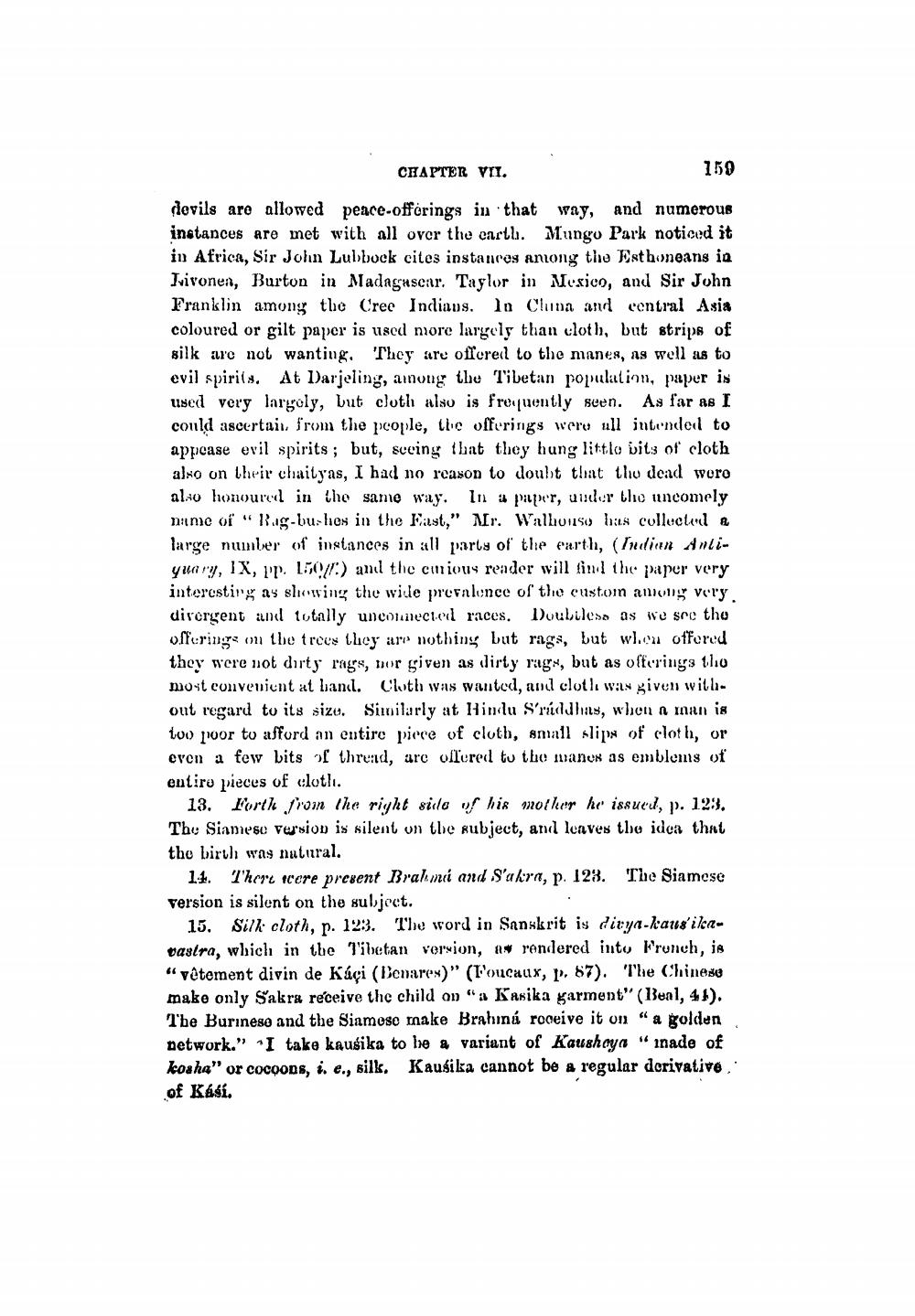________________
CHAPTER VII.
159
devils are allowed peace-offerings in that way, and numerous instances are met with all over the earth. Mungo Park noticed it in Africa, Sir John Lubbock cites instances among the Esthoneans in Iivonea, Burton in Madagascar. Taylor in Mexico, and Sir John Franklin among the Cree Indians. In Cluna and central Asia coloured or gilt paper is used more largely than cloth, but strips of silk are not wanting. They are offered to the manes, as well as to evil spirits. At Darjeling, among the Tibetan population, paper is used very largely, but cloth also is frequently seen. As far as I could ascertain, from the people, the offerings were all intended to appease evil spirits; but, seeing that they hung little bits of cloth also on their chaityas, I had no reason to doubt that the dead were also honoured in the same way. In a paper, under the uncomely name of Rag-bu-hes in the East," Mr. Walhonso has collected a large number of instances in all parts of the earth, (Indian Antiquary, IX, pp. 1507) and the emious reader will find the paper very interesting as showing the wide prevalence of the custom among very divergent and totally unconnected races. Doubtless as we see the offerings on the trees they are nothing but rags, but when offered they were not dirty rags, nor given as dirty rags, but as offerings tho most convenient at hand. Cloth was wanted, and cloth was given without regard to its size. Similarly at Hindu S'ráddhas, when a man is too poor to afford an entire piece of cloth, small slips of cloth, or even a few bits of thread, are offered to the manes as emblems of entiro pieces of cloth.
13.
Forth from the right side of his mother he issued, p. 123. The Siamese version is silent on the subject, and leaves the idea that the birth was natural.
14. There were present Brahmi and S'akra, p. 123. version is silent on the subject.
The Siamese
15. Silk cloth, p. 123. The word in Sanskrit is divya-kausikavastra, which in the Tibetan version, as rendered into French, is "vêtement divin de Káçi (Benares)" (Foucaux, p. 87). The Chinese make only Sakra receive the child on "a Kasika garment" (Beal, 41). The Burineso and the Siamese make Brahmnú roceive it on "a golden network." I take kausika to be a variant of Kaushoya "inade of kosha" or cocoons, i. e., silk. Kausika cannot be a regular derivative. of Kásí.




